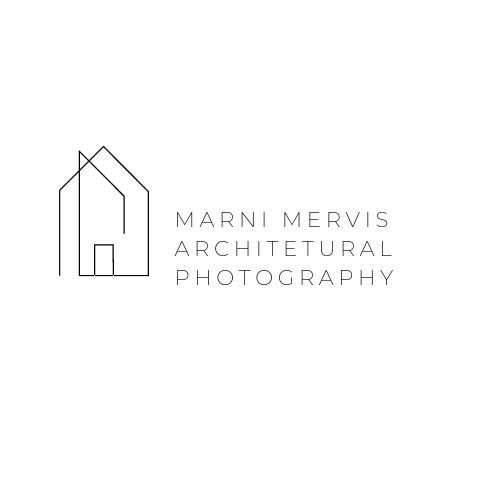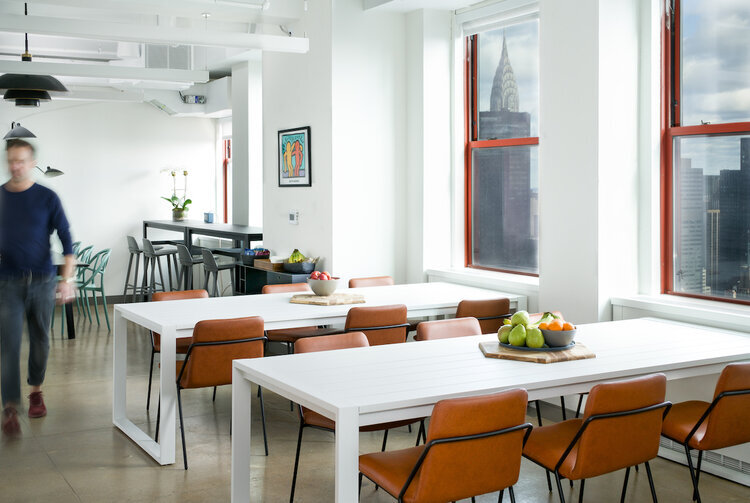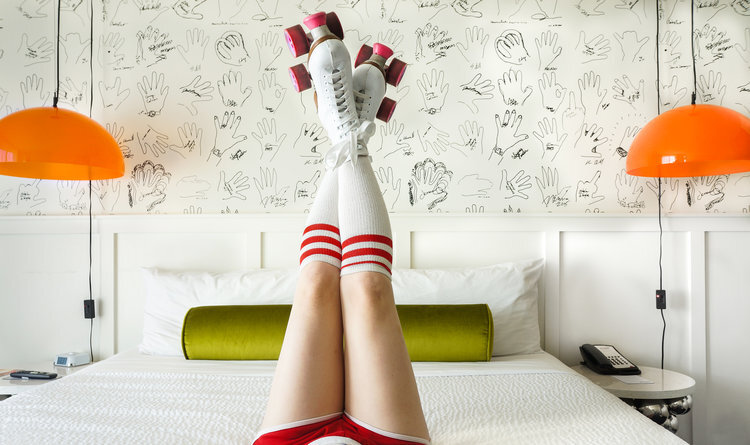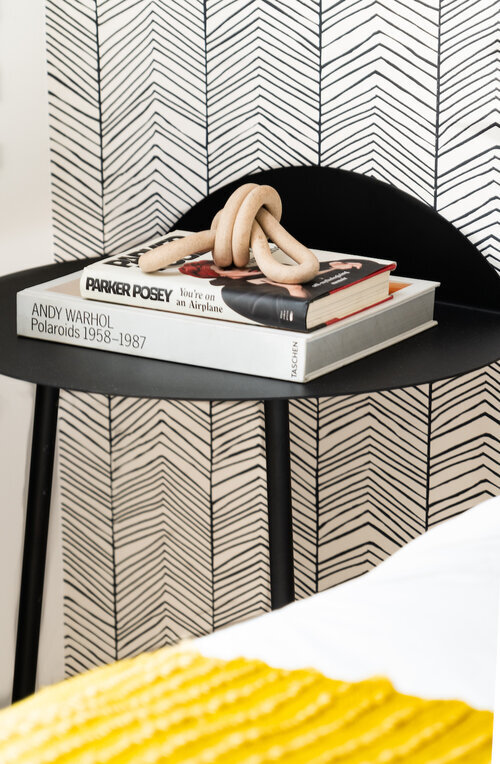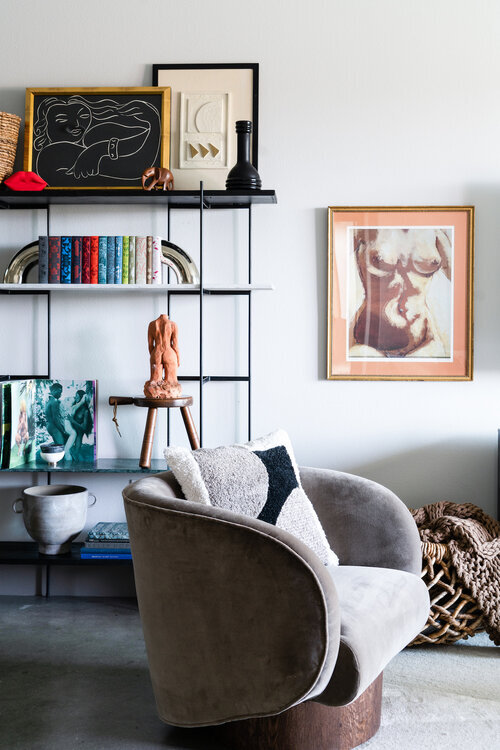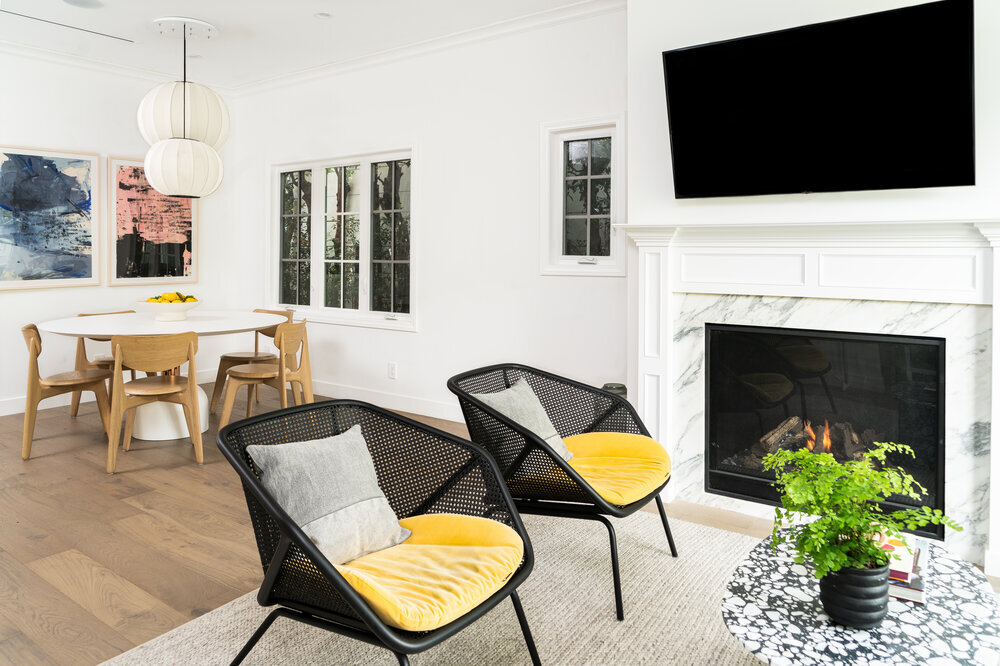Wait a minute, there’s a difference between architectural and real estate photography? Yes. 100%
TLDR: Architectural photography and real estate photography are not the same. Architectural photography is a time intensive process that tells a story, utilizes styling to showcase lifestyle, and showcases design. Real estate photography on the other hand is a uses wide angle lenses to focus mostly on the size of rooms.
Do Real Estate and Architectural Photography Look Different?
So you might ask, is there a visual difference between Architectural photography and real estate photography. Yes.
Real Estate Photography: Typically real estate photography is shot with a wide angle lens to emphasize the size of a space. This can sometimes lead to the distortion of objects and furniture, sometimes creating confusion of scale.
The green pillow in the foreground is distorted by a wide angle lens making it appear longer than its actual square shape.
Architectural Photography: Architectural photography will often feature varied composition and depths; a shot of the entire room, vignettes, detail shots all of these are part of great architectural photography. Architectural photography focuses on design elements, how spaces flow into one another, the way light interacts with the space, the way the architecture communicates with or informs the environment around it, and the overall emotional pull of a space; all of which lend themselves to the wider array of compositions - and thus storytelling.
This architectural photos utilizes a person (or ghost) to provide life and context in the space, as well as showcase how the room’s design highlights the Manhattan built environment and views.
The Goal of Real Estate Photography vs Architectural Photography
Let’s talk about the purpose of either type of photography.
Real Estate photography: Real estate photography is used to sell a home. Seems pretty straightforward, right? These photos show potential buyers how big rooms are and provide a general idea of the home’s floor plan. That said, the photos’ lifespan are only as long a as home remains on market. In a hot market that might only be a couple of days. In a slower market that could be a couple months.
The goal of real estate photography is provide a general floor plan to get the house sold.
Architectural Photography: On the other hand, as an architectural photographer, when I shoot for architects, interior designers, hotels, or restaurants the purpose these photos is 1) For their portfolios - to showcase to prospective clients, submit for future RFPs 2) Marketing and branding - through photos hospitality establishments can entice and connect with clientele and designers can showcase who they are, what principles define their designs, and what kind of lifestyle their work promotes 3) Publicity - designers and hospitality establishment will often seek to gain publicity in magazines (print or online), and with the right images that tell the right story architects and interior designers and hotels can earn press, getting their name and work out to expansive, new audiences. These types of images ideal for press are not only high-quality, they’re stylish, editorial in nature. They showcase lifestyle and elicit an emotional response from the viewer. Architectural photography typically has a lifespan of a year when it comes to something like publicity, and many more when it comes to portfolios and marketing purposes.
Architectural photography can have multiple goals like branding. This hotel shoot showcases a lifestyle, giving travelers an idea of the hotel’s vibe.
How Long Is Each Kind of Photoshoot?
Real Estate Photography: I was recently speaking with a Los Angeles Realtor friend of mine who said she prefers no more than one, maybe two shots of a room. Otherwise the real estate listing gets too bloated. Real estate photos are concise and typically follow the same pattern, it’s for this reason real estate photoshoots usually happen within a 1 or 1.5 hour time frame. Going back to the idea of photo lifespan, because real estate photos are typically short-lived, they are more standardized in look and process, and thus less time devoted to their creation.
Architectural Photography: Architectural photography goes back to the idea of storytelling. It’s important for the architectural photographer to be able to pinpoint the way light travels within the space throughout the day (e.g. the most ideal times to shoot each room). A detailed shot list will also help the architectural photographer develop the designer or architect’s visual story. Styling the space adds another time element to architectural photoshoots. The photographer, or photo stylist (depending on the size of the shoot), will move through the space reconfiguring furniture for the ideal composition, adding accessories to enliven the space, creating a lifestyle to reinforce the narrative. A restaurant can be a half day or full day shoot depending on scope of the project. A typical Los Angeles home will often be a full day photoshoot. A hotel will be a multiple day photoshoot.
Are Real Estate and Architectural Photography Lit The Same?
No, the two types of photography are lit in different ways.
Real Estate Photography: Real estate photography will typically turn on all all the lights within a home when photographing a space. Again, this goes to the idea of selling the home and showcasing just how many light sources are in a house. Traditional lighting can often colorize photos in unwanted ways, create glare, or cast unwanted shadows.
Architectural Photography: Architectural photography is traditionally shot with natural light or professional lighting in order to create a photo that’s evenly lit, or one that takes advantage of unique natural lighting moments intended by the architect. That means architectural photography is typically photographed with all artificial light sources in the space (light switches lamps, chandeliers, etc) in space turned off.
